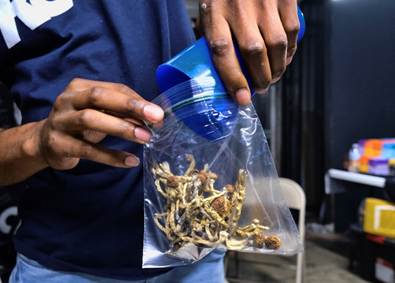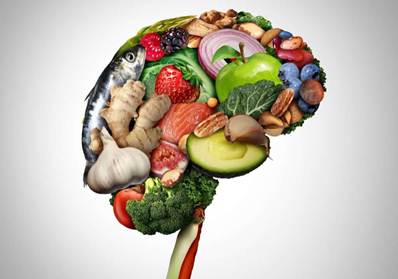From Washington State to the Florida Everglades, much of the U.S. is or has recently been under threat of wildfire activity.
To date, current U.S. wildfire activity is exceptionally high, with nearly 875,000 acres burned and 49 large, uncontained fires. This trend of increasing wildfire acreage and severity aligns with a multi-year pattern, as the annual acres burned since the 1980s have been steadily climbing, with 2024 seeing a near-record 8.9 million acres burned.
What many may forget is that air pollution is a major health concern for people around the world, not just when fires are raging.
Pollution as a Global Crisis
Air pollution, which includes smoke inhalation from wildfires, poses significant risks to both environmental and human health. The World Health Organization (WHO) reports that air pollution causes the death of seven million people per year globally. Living in urban areas with high levels of pollution can exacerbate health issues, such as asthma, bronchial diseases, and heart disease.
With the challenges of air pollution becoming increasingly prevalent, scientific research provides new insights into how our diet can protect us from the harmful effects of air pollution and the ways that we can reduce the impact through various foods.

The Role of Antioxidants in Combating Air Pollution
Oxidative stress and inflammation are two major biological responses to air pollution.
 Fine particles, smaller than 2.5 microns, can penetrate deep into the lungs and potentially enter the bloodstream, causing low-grade inflammation and oxidative stress. These processes are thought to aggravate or even drive chronic diseases.
Fine particles, smaller than 2.5 microns, can penetrate deep into the lungs and potentially enter the bloodstream, causing low-grade inflammation and oxidative stress. These processes are thought to aggravate or even drive chronic diseases.
Antioxidants are substances that neutralize harmful free radicals produced in the body as a result of exposure to toxic air particles. Free radicals are unstable molecules that can cause inflammation, leading to a range of health issues, from diseases to premature aging.
The existing literature on the subject suggests that some harmful effects of air pollution may be modified by the intake of essential micronutrients (such as B vitamins, and vitamins C, and E), omega-3 fatty acids, Mediterranean diet guidelines and cruciferous and apiaceous vegetables.
By ensuring that our diet is rich in antioxidants, we can help our bodies protect themselves from the damaging effects of air pollution.
Mediterranean Diet

The Mediterranean diet emphasizes consumption of plant-based foods, olive oil and fatty fish with omega 3s to provide a diet highly enriched in antioxidants and anti-inflammatory compounds.
A large cohort study with detailed diet information at the individual level assessed whether a Mediterranean diet modified the association between long-term exposure to ambient air pollution and cardiovascular disease mortality risk.
The study found that those with a higher adherence to a Mediterranean-style diet had significantly lower rates of air pollution-related mortality.
This suggests that increased consumption of foods rich in antioxidant compounds may aid in reducing the considerable disease burden associated with ambient air pollution.
Cruciferous Vegetables
Broccoli and other cruciferous vegetables can dramatically boost the detox enzymes in our liver and help decrease the level of inflammation within our bodies. This may explain why eating more than two cups of cruciferous veggies a day is associated with a 20% reduced risk of dying, compared to eating a third of a cup a day or less.
The cruciferous compound sulforaphane is a powerful inducer of our detox enzymes and has been extensively researched for its cancer-fighting abilities. Recent studies have also looked at its ability to fight the inflammatory impact of pollutants.
In one study, participants who consumed a regular broccoli sprout extract (equivalent to one to two cups of broccoli a day) experienced a decreased level of inflammation in their airways from pollutants compared to those who did not consume the extract.
Foods like arugula, broccoli, Brussels sprouts, cabbage, cauliflower, kale, radish, and turnips, are a way to combat the long-term health risks of air pollution.
Omega-3 Fatty Acids
Omega-3 fatty acids, commonly found in fatty fish like salmon and tuna, as well as in fish oil supplements, have been shown to offer protection against the cardiovascular effects of air pollution.
 A study by the Environmental Protection Agency (EPA) revealed that individuals with higher levels of omega-3 fatty acids in their blood experienced less adverse effects from short-term exposure to outdoor air pollution.
A study by the Environmental Protection Agency (EPA) revealed that individuals with higher levels of omega-3 fatty acids in their blood experienced less adverse effects from short-term exposure to outdoor air pollution.
It found that individuals with higher levels of these fatty acids experienced improved lung and vascular function following short-term exposure to NO2.
Regular intake of foods such as chia seeds, flaxseeds, and walnuts, can mitigate these effects of nitrogen dioxide.
Apiaceous Vegetables
Apiaceous vegetables, such as celery, carrots, parsnips, and parsley, have been found to protect the body from the accumulation of acrolein, a lung and skin irritant present in cigarette smoke and automobile exhaust.
A study by the University of Delaware discovered that these vegetables support detoxification by increasing antioxidant enzyme activity in the liver.
Vitamin C-rich Foods
Vitamin C is a potent antioxidant that can help the body eliminate free radicals and reduce the impact of air pollution. Vitamin C is also a water-soluble vitamin and potent antioxidant that should be prioritized in a diet designed to combat the effects of pollution. The human body cannot produce or store vitamin C, so it’s crucial to include it in our diet daily.
Vitamin C works to recycle vitamin E, as well as being essential for collagen synthesis. Collagen synthesis helps make our muscles and tissues resilient.
Foods rich in vitamin C, such as oranges, broccoli, kiwi, cabbage, and turnip greens, can help maintain healthy levels of vitamin C in the lungs.
Vitamin B-rich Foods
 Columbia University conducted a study that concluded that B vitamins could prevent particulate pollution from affecting heart rate variability and provoking inflammation.
Columbia University conducted a study that concluded that B vitamins could prevent particulate pollution from affecting heart rate variability and provoking inflammation.
According the lead scientist Jia Zhong, a huge consideration is the expression of genes, stating that pollution can activate normally quiet “bad genes,” and that B vitamins may keep those potentially dangerous genes silent.
Read our post on epigenetics to learn more how genes are expressed.
Vitamin E-rich Foods
Vitamin E is another powerful antioxidant that can help protect against the harmful effects of air pollution. According to studies, there exists an association between the amount of vitamin E in our bodies, and exposure to particulate pollution and how well our lungs function.
Plant-based cooking oils like rice bran oil, sunflower oil, olive oil, and canola oil, as well as almonds and sunflower seeds, are excellent sources of vitamin E.
Other Factors to Build Resistance to Air Pollution
In addition to consuming the foods listed above, it’s essential to maintain a healthy, balanced diet to build resistance against air pollution.
Adopting certain lifestyle habits can further reduce the impact of air pollution on your health.
Some of these habits include:
- Regular exercise to increase lung capacity and improve respiratory function
- Quitting smoking, as it can cause premature aging of the lungs and increase the risk of lung diseases
- Adopting good hygiene practices, such as washing hands regularly and avoiding crowded areas during flu season, to prevent lung infections
- Maintaining good indoor air quality to minimize exposure to pollutants in the home
Scientific evidence supports the notion that diet plays a crucial role in mitigating the adverse effects of air pollution on human health. Adopting specific dietary patterns, such as the Mediterranean diet or increasing the intake of the above-mentioned nutrients, can help reduce pollution-related health risks.













